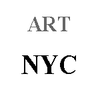
When an artist penetrates the deep sorrows of the times with his talent, great works of the times are born, and we call those who produce them, great artists. Angelm Kiefer is one such artist. Anselm Kiefer was born in 1945 in Germany. World War II broke out during his birth. The chaotic and disturbing afterimage of that era, unfortunate or fortunate, made him the most famous, successful, and controversial painter Germany had ever produced since World War II.
He attended Rastart's grammar school in Ottersdorf in 1951. In 1966, while majoring in law and Roman language at the University of Freiburg, Kiefer studied art in Düsseldorf after leaving there. In the early days, he performed a performance imitating Nazi salutes as a massager, which he wanted to remind people of the loss of German culture due to the crazy xenophobia of the Third Reich. He disputed Political actions in the first solo exhibition, "Occupation," held at the Galerie Am Kaiserplatz in Karlsruhe in 1969. Over the next few decades, the media continued to debate the artistic value of his work.
Anselm Kiefer's work uses soil and other raw materials in a super-large, dull, sluggish, almost oppressive, destructive style. It also counts the signatures or names of historically significant people, legendary figures, or places. These are all encrypted seals that Kiefer uses to shape the past. This links him to a trend called neo-symbolism. Topics related to Nazi rule, particularly, appear well in his work.
While studying under the guardianship of Josef Boyce at the Düsseldorf Academy of Art in the 1970s, he showed that his painting style was similar to Georg Baselitz's. He used straw, ash, clay, lead, and paint. Paul Chelan's poetry, along with the theological concept of Kabbalah, played a specific role in Keeper's development of German history and the horrors of the Holocaust. He used glass, straw, wood, and other plant materials to indicate that the work of art was temporary and transient. The use of these materials contrasts with the hard materials he uses in his paintings. Joseph Beuys's use of scaffolding or carpet felt cloth for artistic practice influenced how familiar materials express ideology. It is also a typical neo-expressionist style. In the 1970s, he immersed himself in German mythology. He traveled throughout Europe, the United States, and the Middle East, expanding his scope to sculpture, watercolors, woodblock prints, photography, books, and painting.
In The 1980s, Anselm Kiefer expanded the subject of his work from focusing on Germany's role in civilization to the fate of art and culture in general. His work became increasingly three-dimensional and covered topics such as occult, symbolism, theology, and mysticism, as well as ethnic identity and collective memory.
In 1990, he was awarded the Wolf Prize; in 1999, he was awarded the Praemium Imperiale by the Japan Arts Federation.



